A cultural tradition exists in games and toys.
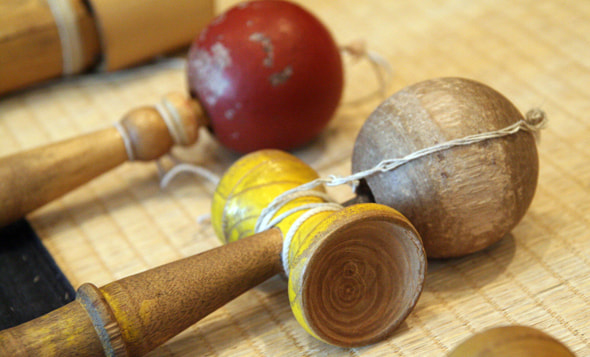
Although shapes of wooden, folksy toys are still unchanged, historical backgrounds are deeply reflected in some toys made in each period.

A variety of dolls
Dolls are precious playmates and friends all through the ages. Dolls reflecting each period are gathered. The upper left doll is a "sleeping doll" (around 1930) which closes its eyes when it is laid down. The upper right doll is a "Kewpie doll" (around 1950)
Dolls are precious playmates and friends all through the ages. Dolls reflecting each period are gathered. The upper left doll is a "sleeping doll" (around 1930) which closes its eyes when it is laid down. The upper right doll is a "Kewpie doll" (around 1950)
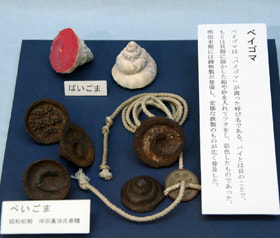
A variety of Beigoma
The name of "Beigoma," or a traditional Japanese spinning top toy, derived from "Baigoma." It was originally made by filling "Baigai," or a spiral seashell, with sand and clay. Later in the late Meiji Period, it was made of cast metal and became popular.
The name of "Beigoma," or a traditional Japanese spinning top toy, derived from "Baigoma." It was originally made by filling "Baigai," or a spiral seashell, with sand and clay. Later in the late Meiji Period, it was made of cast metal and became popular.
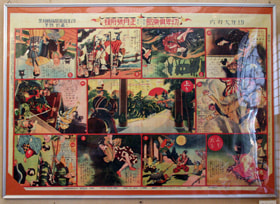
Yonen Kurabu "Yonen Oh-sugoroku"
This "sugoroku," or a Japanese backgammon, was a supplement to "Yonen Kurabu," a magazine for children. Chinese characters which read "Sho-Gatsu-Go-Fu-Roku," are written on the board, and the picture is based on a social background at that time (1928).
This "sugoroku," or a Japanese backgammon, was a supplement to "Yonen Kurabu," a magazine for children. Chinese characters which read "Sho-Gatsu-Go-Fu-Roku," are written on the board, and the picture is based on a social background at that time (1928).
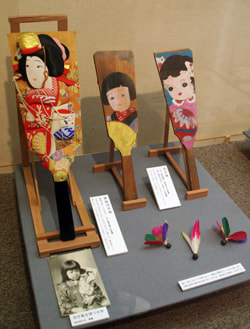
Historical backgrounds and trends at that time are also reflected on battledores on which cute girls are depicted.
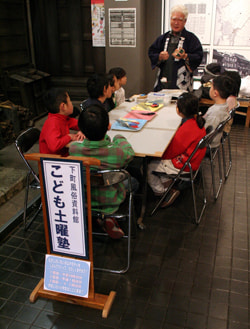
"Saturday School," in which toy making and others are taught to children, is being held at the museum. Some children have regularly attended the school, and their enthusiasm can be felt. A lecturer of the day was Yasutaka Awaji, a management cooperator of the museum and an organizer of "Doyu Bunka Kenkyu Kobo," or children's game culture research studio.
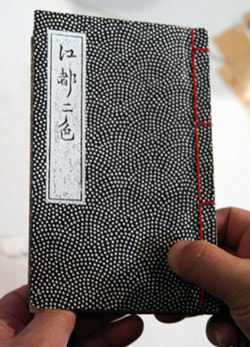
This is Awaji's precious reference book "Edo Nishiki," a picture book of toys in the Edo Period (pictures by Shigemasa Kitao, preface by Nanbo Ohta).

Today's subject is making "Ita-gaeshi," a toy using wooden plates. Awaji also teaches various things ranging from social backgrounds to manners. It is impressive that he considers not only handing down of culture but also nurturing of children's sociability.
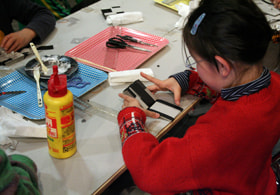
A plate does not flip over if a band of "Ita-gaeshi" is incorrectly pasted. It requires scrupulous attention. Fingers also become tense. Can she complete it?
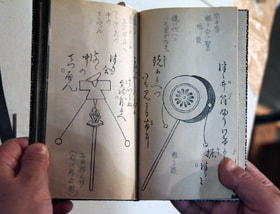
A variety of games and toys in the Edo Period are illustrated in "Edo Nishiki." This is a reprinted edition.
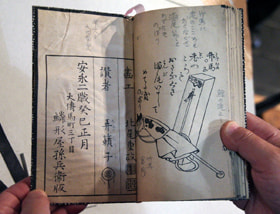
At the end of the book, there are the following descriptions: pictures by Shigemasa Kitao, preface by Flute Lover, that is, Edo's comic tanka poet Nanbo Ohta.

Historical backgrounds and trends at that time are also reflected on battledores on which cute girls are depicted.

"Saturday School," in which toy making and others are taught to children, is being held at the museum. Some children have regularly attended the school, and their enthusiasm can be felt. A lecturer of the day was Yasutaka Awaji, a management cooperator of the museum and an organizer of "Doyu Bunka Kenkyu Kobo," or children's game culture research studio.

This is Awaji's precious reference book "Edo Nishiki," a picture book of toys in the Edo Period (pictures by Shigemasa Kitao, preface by Nanbo Ohta).


















